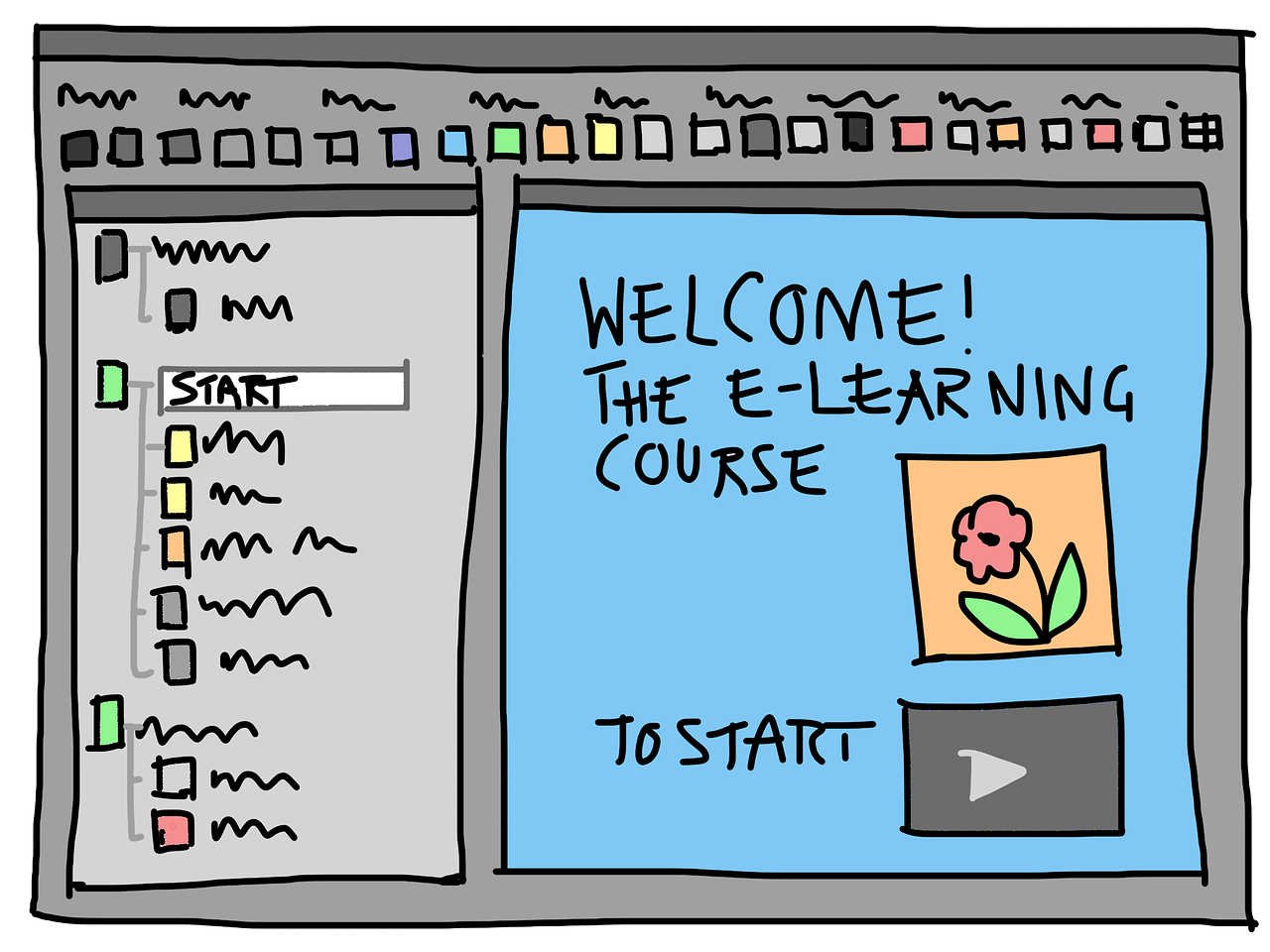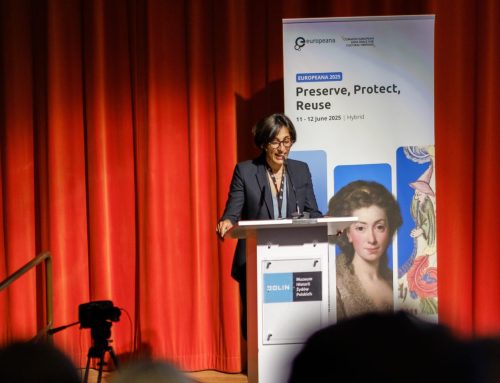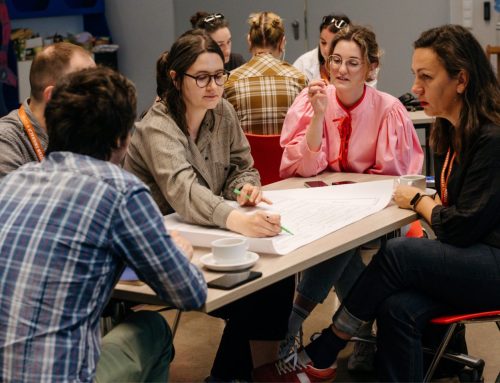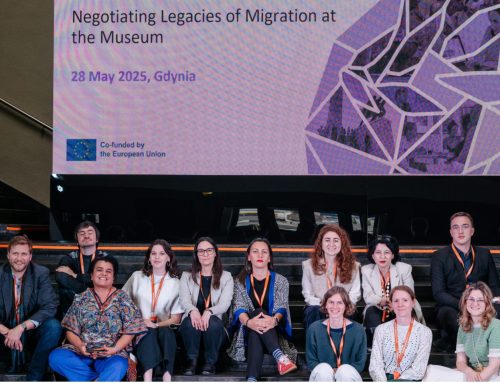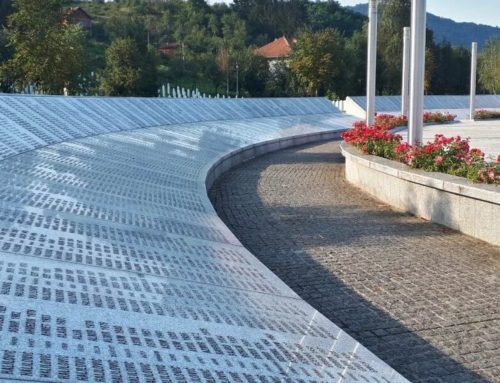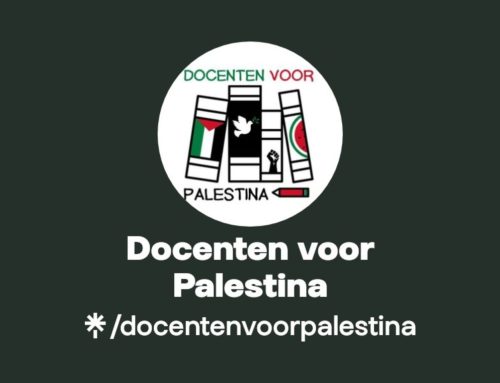Currently hundreds of million of children are not attending school due to COVID-19 that is holding Europe and large parts of the world in its grip. More and more countries decided to close their schools and take their learning online. There are many possibilities in teaching online, if students have access to the internet and a device to use for their school activities. Unfortunately not all students have the same access to these vital resources, which is something that educators are struggling with all over the world. The presented tips in this blog post are written under the presumption that students have internet access and a device to use for their learning. This article briefly explains the different modes of online learning and provides five free resources useful for history educators in particular.
Synchronous versus Asynchronous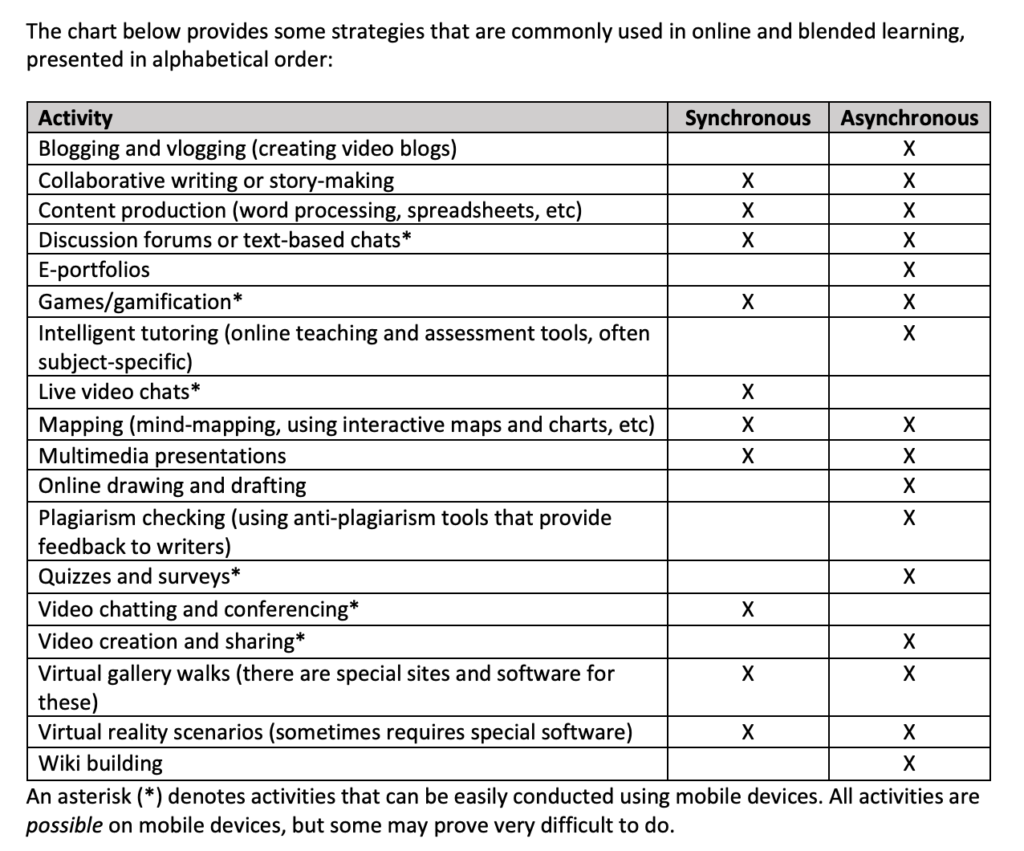
There are two ways in which online education can take place: Synchronous and Asynchronous. The former means that students are engaging with a learning moment at the same time, while the latter means that students learn the same but not at different times. Thus synchronous learning takes place when the students are at the same time active and online, while an asynchronous learning activity can be done over a period of time. The International Baccalaureate (an international educational foundation with thousands of schools world wide) published a guide to support educators in teaching their courses in online environments. The following chart is taken from the guide to indicate the different activities that are possible based on the prefered learning mode.
Some schools have their own learning management platforms. If your school does, then the following websites can offer an addition to what you already work with. If you are working at a school without an online learning platform, these apps can be helpful.
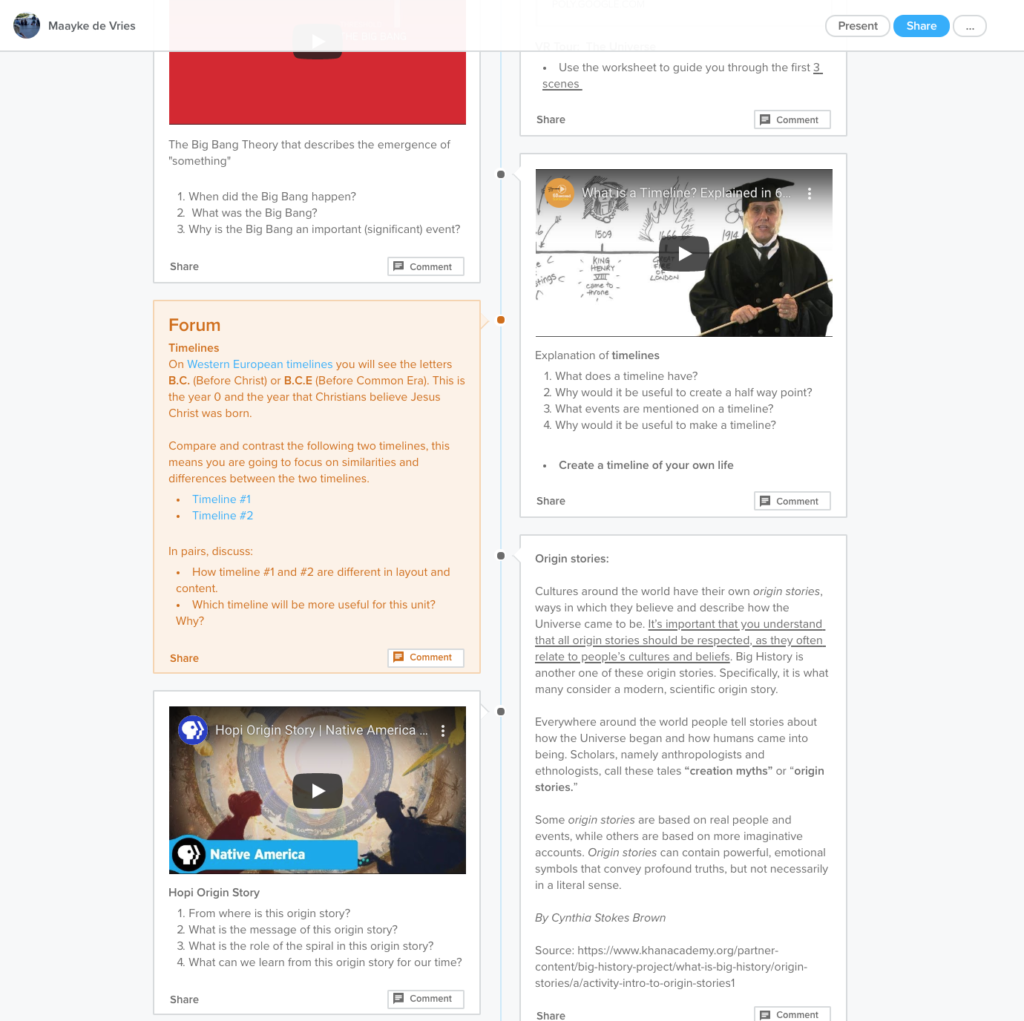 #1 Sutori (Asynchronous learning)
#1 Sutori (Asynchronous learning)
Sutori is a great way to easily share materials with students, as you can decide what framework you want to use to present your information. For history educators, the timeline option will most likely be the easiest one. Students can collaborate with each other, respond to the teacher, and retrieve information from there. Teachers can insert youtube videos, images, and other files. Students can respond to the assignments set by the teacher and also work together on assignments by inserting things into the timeline. Therefore, this tool is an excellent way to provide students with a clear overview of the topic and opportunities to collaborate.
#2 Online forum (Asynchronous learning)
One online method that is especially beneficial for history educators is a forum on which
students respond to a question or statement posed by the teacher. One of the characteristics of history education are of course the debates. By creating an online forum, the debate still takes place but online. Bonus: this is an excellent opportunity for students to develop their digital citizenship skills. 
#3 Collaborative Writing (Synchronous and Asynchronous learning)
Another thing that history educators are teaching their students is formulating an argument and supporting that argument with a well-written essay. A way to have students practice their writing skills, while working either synchronously or asynchronously, is through a collaborative essay. There are several tools one can use, for example Google Docs, which you can easily share with the students who then collaborate on a question or thesis. As a member of the document, you can easily keep track of changes and see what work different students are producing.
#4 Nearpod (synchronous learning)
This fabulous free platform lets you create presentations that students see on their own device. Thus students join your presentation by filling out a code on their screen and then see your presentation. This app is ideally used for live lessons, because it does not allow for voice sharing. Thus students see the information on their screen and the activities that you planned for them, as you can incorporate multiple choice questions, open questions, and collaborative assignments. However, it only works when a presentation is live, thus this only works as a synchronous learning activity; everyone has to be online and looking at the presentation at the same time.
#5 Padlet (Synchronous and Asynchronous learning)
This is another free platform that makes it really easy to have students collaborate and show their learning progress by adding on to an online board. You can decide the design of the board, e.g. in the example shown here the design was four different columns (see image below). Students can post their response to a question in the form of text, picture, or video. Besides, students can comment on each others’ answers or give a thumbs up if they agree.
Another way to get online teaching ideas is by following some threads on Twitter. For example, one teacher elaborated on the idea of having students keep a diary during the period of self-isolation; for history teachers the keeping of a diary can conceptually be linked to the diary of Anne Frank. Other hashtags with tons of teaching ideas from other educators in similar situations all over the world are #teachingremotely, #teachingonline, #elearning, or #distancelearning. Educators are sharing best-practices for online learning in the form of infographics, pictures, or Google Slides.
Conclusion
Of course, there are many more possibilities and opportunities. However, these five seem to have a good connection with history education, easy access, and limited challenges regarding data protection like some apps that work with video calling. For teachers working in Europe, the GDPR rules is something to keep in mind, especially when working with minors and an account needs to be created to access a certain tool. For all the online learning facilities described in this article (except for Kialo), no accounts need to be made by students and the basic features are for free. Besides, Twitter is offering many great insights into the ways teachers globally are taking up the challenge of remotely teaching. Hopefully students will be able to attend their regular schooling soon and these digital features can be used to support face to face teaching.
Written by Maayke de Vries, History teacher at International School Almere & PhD Student University College London

